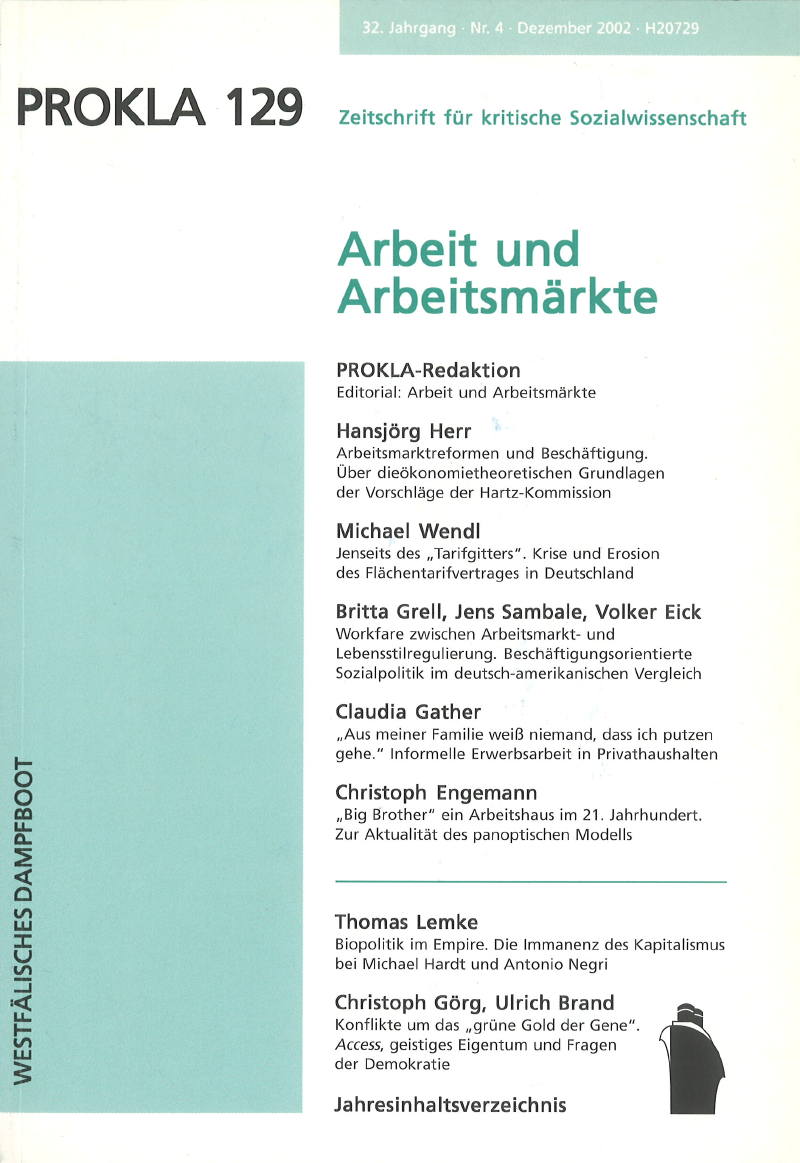Workfare zwischen Arbeitsmarkt- und Lebensstilregulierung
Beschäftigungsorientierte Sozialpolitik im deutsch-amerikanischen Vergleich
DOI:
https://doi.org/10.32387/prokla.v32i129.686Schlagworte:
Arbeitsmarkt, Regulierung, Sozialpolitik, Deutschland, USA, WorkfareAbstract
Workfare strategies, requiring recipients of public assistance to work or to participate in work related activities, are not a completely new phenomenon of the modern welfare state. Nevertheless, there have been remarkable policy changes and reforms in most of the Western capitalist societies since the 1990s trying to replace or combine systems of cash assistance for the poor with mandatory employment programs. The article looks at the recent reform efforts and workfare initiatives in the US and Germany and identifies similarities as well as differences in the approaches and political intentions. While US-programs like "Wiscon Works" have gained much attention for reducing caseloads and moving single mothers into the (lowwage) labor force, little is known in Germany about the costs and the hardships of those who were forced to leave welfare.






